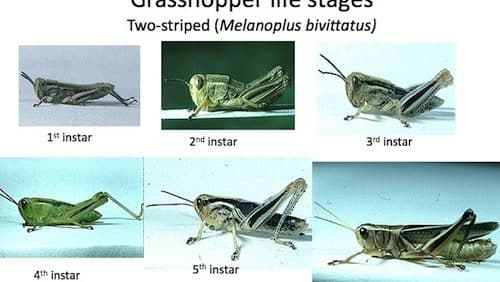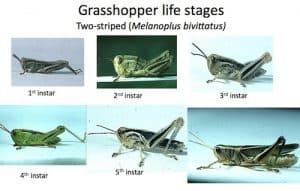Grasshoppers. If populations are significant and crop feeding has begun, a spray or bait application around field edges may be enough to reduce the threat. Grasshoppers are easier to manage when they’re small — less than the third instar. Except in cases where there are extremely high populations feeding on crop along the edges, ideal timing for grasshopper management is when you are starting to see wing buds on some of the older grasshoppers. Hatch of grasshopper eggs can often be quite prolonged, and applying controls too early can result in some of the later part of the hatch being missed.
Lygus. Lygus are rarely economical to spray before early-podding, however if damage is preventing canola from flowering, a spray at the bud or flowering stage may be warranted. This would likely only be necessary under extremely high Lygus populations or drought stressed canola, which does not compensate for lost buds or flowers as well. Under good growing conditions, canola can compensate well for damage to buds and flowers with minimal or no yield loss with low to moderate levels of feeding to buds and flowers.
Cabbage seedpod weevil. Canola in the Lethbridge area is coming into flower, and early indications suggest there could be a lot of cabbage seedpod weevils this year. The economic threshold is 20 CSPW per 10 sweeps generally across the field. The goal is to stop adults from laying eggs in newly formed pods. CSPW don’t do their damage until pods are at least 1” long — so aim to spray just prior to that stage, at 15-20% bloom. Read more
Diamondback moth larvae. Some feeding has been reported, but with the crop growing vigorously, early feeding is not likely to do much damage. The pod stage is when diamondback moth larvae tend to cause economic damage, but the past few years beneficial insects have taken care of the population before canola reaches this more vulnerable stage. View an archived ACPC webinar.
Leafroller. A few growers have observed leafrollers this week, but the worms rarely causes economic damage, and are usually just spotty and at low populations. See a video here.
See the Prairie Pest Monitoring Network’s latest insect forecasts and risk maps here.


